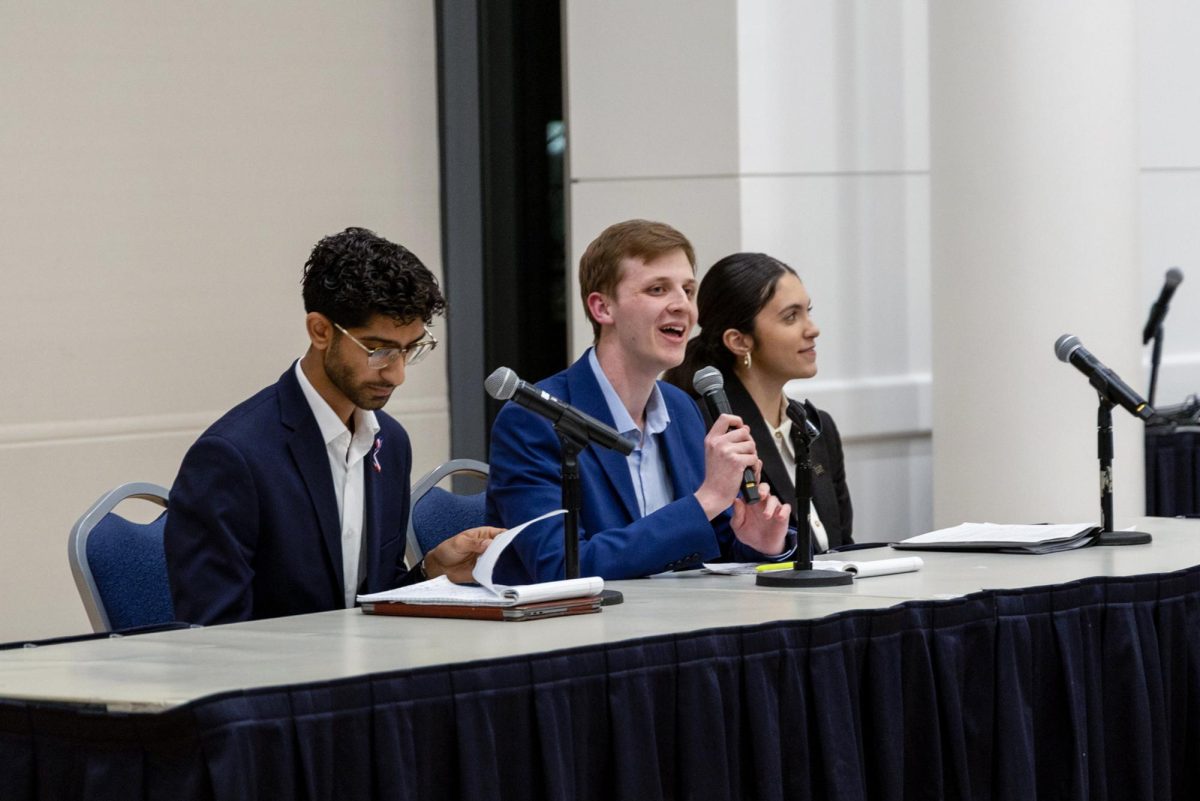As students find themselves saddled with telephone bills, textbook expenses and miscellaneous expenditures, credit card debt looms large as a challenge of student life.
With credit card solicitors outside the Marvin Center offering free T-shirts, prepaid calling cards and discounts on air travel, credit cards are a ubiquitous temptation.
The 1997 Colonial Cabinet warned freshmen at last summer’s Colonial Inauguration about the credit card solicitors who distribute literature in front of the Marvin Center and other spots on campus. Some Cabinet members say they believe student credit debt is a growing concern.
“I know that it is an issue on campus and know a lot of people who have gotten into trouble because of it,” said Julie Hay, a 1997 Cabinet member.
Hay said this was the first year the Cabinet used credit card debt as the focus of one of its skits. The skits performed for freshmen and their parents portrayed the accessibility of credit card applications on campus and the ease of spending on a credit card.
Students in the skits were offered free merchandise if they signed up for a card or found credit card applications in their new textbooks. The students were then confronted by their parents, who had received outrageous bills from their children’s credit card companies.
“I don’t think people realize that credit is something that follows you for the rest of your life,” said junior Chris Hahn.
Lauren Sharp, a freshman credit card holder, said she got a card for emergencies and to begin establishing a good credit line.
“I want to have one in case I want to order something through the mail or need proof of ID,” said Andrea Stiteler, a freshman who is currently applying for a credit card.
Easy access
University administrators question the easy availability of credit cards on campus.
“We have to recognize that the easy access to credit cards on campus causes the problem,” said Mike Gargano, executive director of the Student Activities Center. “Personally, I think we have too may credit cards making themselves available to the students.”
Joe Montano, a Marvin Center scheduling clerk, said credit card companies are treated the same as other off-campus groups when they request permission to solicit cards on campus.
He explained that credit card solicitors must be sponsored by a student group or the University administration in order to solicit inside the Marvin Center.
“Often student organizations have an agreement with the credit card company so that it acts as a fund-raiser for the student organization,” Montano said. “If this is the case, at times they will be granted a fee waiver (for the per day charge of $175).”
Paying tuition with credit
But despite concerns that students – both at GW and elsewhere – are too reliant on credit cards, GW students are unable to use a credit card to charge what is undoubtedly their largest expense: tuition.
In the fall semester of 1993, GW began allowing students to pay up to $5,000 in tuition payments with a credit card each semester.
According to administrators in the Office of the Vice President and Treasurer, the University incurred significant bank charges and transaction fees as a result of increased use of credit cards to pay tuition.
Bank fees assessed on GW drained money from academic programs, said Don Boselovic, assistant vice president for budget. Thus, a convenience for students and their families – paying tuition with credit cards – was becoming a University expense.
So in the fall of 1995, GW stopped allowing students to pay tuition by credit card.
Also contributing to the University’s decision to no longer accept credit card payments, credit card companies did not agree with the $5,000 cap.
“They said they couldn’t do business on that basis,” Boselovic said. “We would have had to allowed students to pay their entire tuition with credit cards. It would have been costly for the University because of the high charge by the banks.”
But other universities and student loan programs allow students to pay with credit cards.
According to a survey conducted in July by Sallie Mae, a corporation that processes student loans, more than 20 percent of college students use credit cards to pay for part of the costs of their educations.
“I would love to see it come back,” said Student Association President Kuyomars “Q” Golparvar of the credit card method of tuition payment. “I would love to see the students be able to pay for their tuition using whatever means was best for them.”






